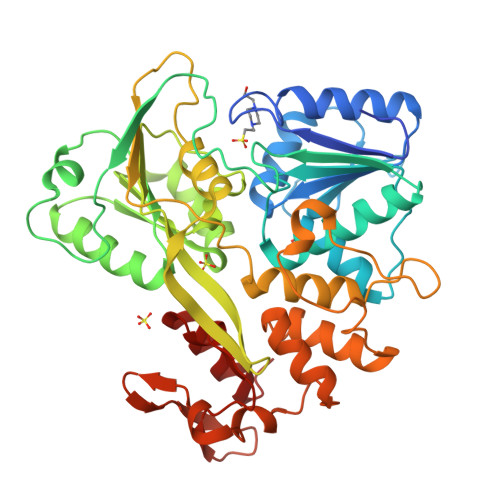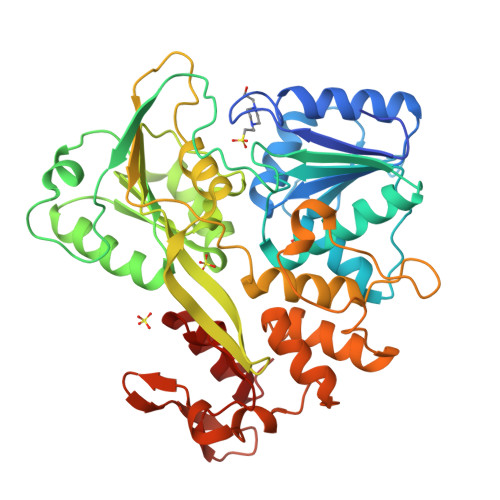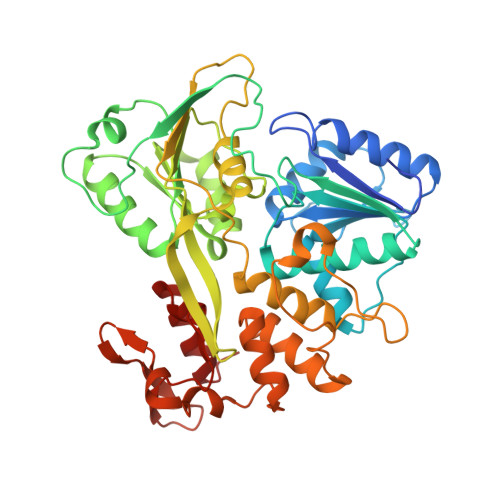Crystallographic Snapshots of the Zika Virus NS3 Helicase Help Visualize the Reactant Water Replenishment.
Fang, J., Jing, X., Lu, G., Xu, Y., Gong, P.(2019) ACS Infect Dis 5: 177-183
- PubMed: 30672289
- DOI: https://doi.org/10.1021/acsinfecdis.8b00214
- Primary Citation of Related Structures:
6ADW, 6ADX, 6ADY - PubMed Abstract:
Zika virus (ZIKV), a positive-strand RNA virus belonging to the Flavivirus genus, has become an urgent public health concern since recent outbreaks worldwide. Its genome replication is facilitated by the viral NS3 protein bearing helicase function. The NS3 helicase uses energy derived from adenosine triphosphate (ATP) hydrolysis to unwind RNA duplexed regions. Structural studies of the flavivirus NS3 helicases have suggested a conserved mechanism of ATP hydrolysis. However, the process of the reactant water replenishment, a key part of the hydrolysis cycle, remains elusive. Here, we report two high-resolution crystal structures of ZIKV NS3 helicase in complex with adenosine diphosphate (ADP) and Mn 2+ , one with the reactant water already loaded as previously observed and the other with the water molecule still in a loading state. These data suggest that the reactant water replenishment can occur between the release of phosphate and the release of ADP and improves the structural basis of the NS3 ATP hydrolysis cycle.
Organizational Affiliation:
The Joint Center of Translational Precision Medicine, Guangzhou Institute of Pediatrics, Guangzhou Women and Children's Medical Center, No. 318 Renminzhonglu , Guangzhou , Guangdong 510623 , China.


















